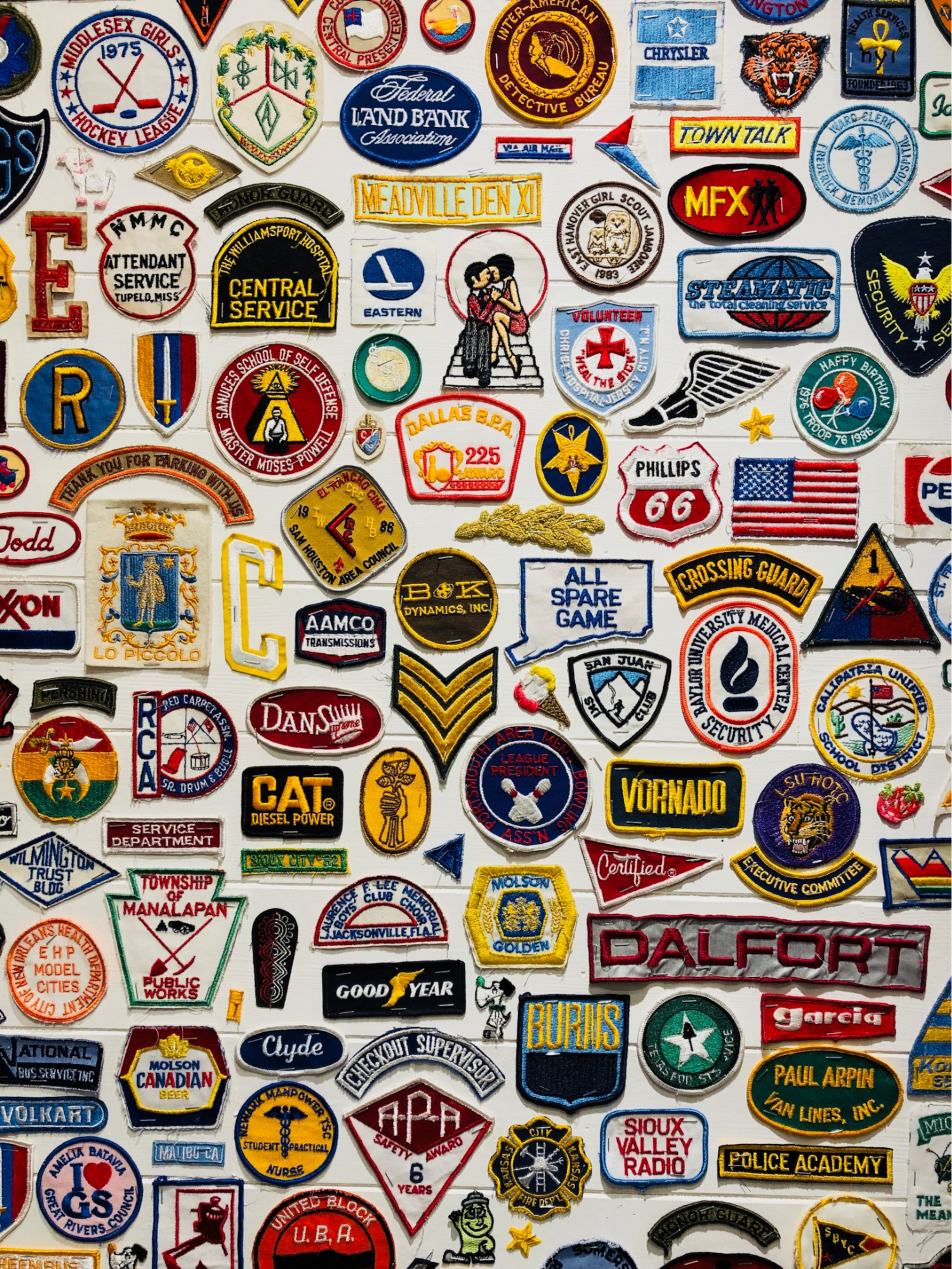Brand awareness is more than “people know us.” You want people to remember you at the right moment. You also want them to feel a real connection. This article shows what awareness means now, how memory works, how to build a digital system, and how to measure progress.
Source: Joao Tzanno on Unsplash

What Brand Awareness Means Today
Modern awareness has three layers. First, people know your brand exists. Second, they feel a bond with it. Third, that bond shapes their choices. Digital channels changed how we build these layers.
Mass repetition used to lead. Today, a chain of meaningful touchpoints does the work. Your website, product, content, community, reviews, and ads must tell one story. Each touch should add clarity and value.
How People Remember Brands
The brain remembers patterns, emotions, and what feels relevant. Distinctive signals help, like a clear visual style, voice, and message. Positive feelings link to your name and speed recall. People also trust other people. Reviews, UGC, and friend recommendations reduce risk and push your brand to the front of the mind.
Build a Digital Brand Ecosystem
Owned channels are your base. Your site, product, emails, and app should show one promise, one tone, and a simple user experience. Earned media builds trust. Mentions, reviews, and PR show others believe in you.
Paid media adds reach and pace. Ads should guide people to the next step, not drown out your core voice. Keep the brand’s heart the same across platforms. Adapt the format to fit how each platform works.
Know Your Audience and Create Resonance
Demographics set context. Psychographics reveal motives and values. Behavior shows real habits. Aim for the simple check: why should this person hear this message here and now? Personalization raises relevance.
Communities keep interest alive between purchases. Give people a place to gather, talk, and contribute. Awareness grows when people belong.
Customer Persona Example

Product and Brand Should Work Together
Product awareness explains what the product does and why it helps. Brand awareness explains who you are and why that matters. New launches lean toward product detail. Long-term growth leans toward brand meaning. Best results come when product proof supports the brand promise, and the promise lifts product appeal.
How to Build Brand Awareness
1.
Define the promise: Write your brand promise in one sentence. Make it clear and useful.2.
Map the journey: List the main touchpoints people see in a week. Remove dead ends and mixed signals.3.
Set brand signals: Pick two brand signals to repeat everywhere. Keep them visible and consistent.4.
Plan content themes: Create three themes that match real customer needs. Ship them every week.5.
Bring in customer voice: Invite reviews and feedback. Highlight user stories with consent.6.
Test paid media: Run one small paid test each month. Point ads to the most helpful next step.7.
Build community: Choose one simple ritual. Host a monthly AMA, club, or challenge.8.
Tune CRM cadence: Send timely, useful messages. Avoid noise.9.
Track core metrics: Watch recall, branded search, and direct traffic. Focus on the trend over time.10.
Keep the story intact: Fix what breaks the story. Align product, support, and sales with the same promise.
Integrated Brand Awareness Strategy

Tactics That Lift Awareness
Loyalty programs work when they offer more than points. Recognition, early access, and insider roles deepen ties. Sponsorships make sense when values match and the activation feels human.
Think experiences and stories, not just logos. CRM keeps you top of mind between purchases. Send useful messages at a respectful pace and match the user’s context.
The Awareness Ladder
People move from recognition to recall, then to top-of-mind. Preference and loyalty come after that. Marketing helps people climb. Product and service keep them from slipping back down.
Advanced Measurement and Analytics
Top of Mind Awareness
Measuring Mental Availability: Top of mind awareness represents the ultimate brand awareness goal. This means being the first brand customers think of in your category. This metric indicates strong mental availability and typically correlates with market share and purchase intent.
Tracking and Optimization: Regular measurement of top of mind awareness helps identify trends and opportunities for improvement. This includes tracking changes over time, comparing performance to competitors, and understanding factors that influence top of mind recall.
Purchase Intent Measurement
Intent Indicators: Purchase intent can be measured through surveys, behavioral data, and predictive analytics. Key indicators include stated purchase likelihood, consideration set inclusion, and behaviors that correlate with eventual purchase.
Optimization Strategies: Understanding the relationship between brand awareness activities and purchase intent enables more effective campaign optimization. This includes identifying which awareness tactics most effectively drive intent and optimizing budget allocation accordingly.
What Are the Examples of Good Brand Awareness?
Brand awareness is not merely recognizing a logo and memorizing a tagline. It is about establishing a connection that the consumer favors. Despite many associating such examples with Coke and Nike, even lesser known brands are succeeding in having an impressive brand awareness but in a manner distinct from the other brands.'
For example, there is Patagonia. This outdoor clothing company is well known among consumers not just because of the affordable price of the products but also because they preach the gospel of environmental protection, interpreting these words under the concept of green marketing.
A novel advertising approach is the campaign, "Do not buy this coat." If they do not want people to consume, placing such ads separates them from the rest, which is a strong positioning. They could mix their advertising strategies without offending using traditional marketing methods.
PalmPalm exemplifies this approach with its vibrant, beach-inspired branding that reflects its Southern California roots. We used sunset hues, playful typography, and lifestyle imagery to create a strong, recognizable visual identity that sets PalmPalm apart in the health and wellness market.
PalmPalm identity by Clay

This cohesive design strategy enhances brand recall and communicates PalmPalm's commitment to a fun, active lifestyle, resonating deeply with its target audience.
Strong brand recognition does not necessitate cutting-edge marketing tactics or massive ad spending. More often, it resides in crafting something completely unexpected for your target market, keeping in mind that they can deliver on your core beliefs. These superb examples demonstrate that no single formula guarantees brand success.
Quick Answers
Brand awareness in one line means people recognize you, remember you, and let you guide their choice. You can grow awareness without a huge budget. Use clear brand cues, a strong product experience, and an active community.
Most impact is lost when channels feel disconnected. Keep the same brand core everywhere. Start measurement with unaided recall, branded search, and direct traffic. Expect change over time, not overnight.
Future of Brand Awareness
Emerging Trends and Technologies
Artificial Intelligence and Personalization: AI technologies enable more sophisticated audience targeting, content personalization, and campaign optimization. These capabilities help create more relevant and effective brand awareness experiences.
Immersive Technologies: Virtual and augmented reality technologies create new opportunities for immersive brand experiences that can generate strong awareness and emotional connection through novel and memorable interactions.
Voice and Conversational Interfaces: The rise of voice assistants and conversational AI creates new challenges and opportunities for brand awareness, requiring adaptation of traditional branding approaches to audio first and conversation based interactions.
Evolving Customer Expectations
Privacy and Data Ethics: Growing customer awareness of data privacy requires more transparent and ethical approaches to audience targeting and personalization in brand awareness campaigns.
Authenticity and Purpose: Customers increasingly expect brands to demonstrate authentic purpose and social responsibility, making values based brand awareness strategies more important for long term success.
Community and Co Creation: The future of brand awareness involves more collaborative approaches where customers participate in brand story creation and community building rather than just receiving brand messages.
FAQ
What Do We Mean By Brand Awareness?
Brand awareness is how familiar people are with a brand and how easily they recognize or recall it.
What Are The 4 Levels Of Brand Awareness?
The 4 levels are brand recognition, brand recall, top-of-mind awareness, and brand dominance.
What Are The Stages Of Brand Awareness?
Stages include unaware, recognition, consideration, preference, and loyalty.
What Are The 4 C’s Of Branding?
The 4 C’s are clarity, consistency, commitment, and credibility.
What Are The 4 P’s Of Brand Management?
The 4 P’s are product, price, place, and promotion — used to shape brand strategy and positioning.
Read More
Conclusion
In conclusion, brand awareness is an essential part of any successful business. By tracking performance metrics and analyzing customer behavior data, businesses can quickly identify areas that need improvement or adjustment to ensure their strategies effectively reach target audiences.
Utilizing SEO techniques such as structured data markup and multimedia embedding can also help increase brand visibility while driving high-quality traffic from potential customers.
Adjusting strategies accordingly based on these insights will allow businesses to stay ahead of the competition and maximize reach among their desired audience – leading to long-term success!


About Clay
Clay is a UI/UX design & branding agency in San Francisco. We team up with startups and leading brands to create transformative digital experience. Clients: Facebook, Slack, Google, Amazon, Credit Karma, Zenefits, etc.
Learn more

About Clay
Clay is a UI/UX design & branding agency in San Francisco. We team up with startups and leading brands to create transformative digital experience. Clients: Facebook, Slack, Google, Amazon, Credit Karma, Zenefits, etc.
Learn more


